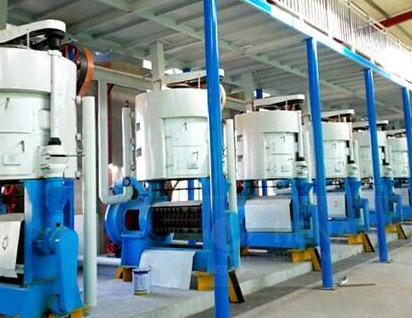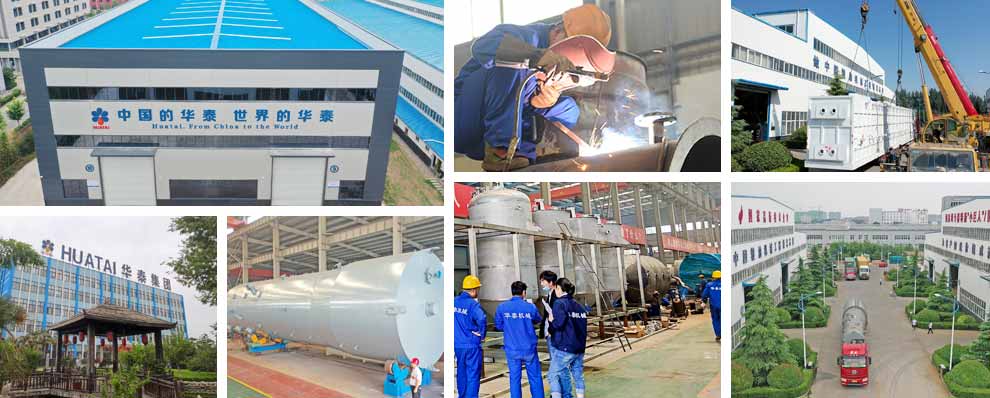
Huatai sesame oil production line adopts advanced modern technology, low temperature pressing to retain the natural mellow fragrance of sesame, the oil is pure and free of impurities, reaching the first-class sesame oil standard. The equipment is fully automated control from cleaning, roasting to pressing, processing Capacity 10-2000TPD flexible configuration to meet the needs of different scales of sesame oil production.

Sesame is one of the main oil crops in China, which has a high nutritional value. The oil content of sesame seed is about 54%, and the oil-yielding rate is 45%-50%, higher than most of the known oilseeds. Sesame oil is generally regarded as high-priced and high-quality edible oil. It is high in polyunsaturated fat (43%) and monounsaturated fat (42%). It also contains a certain amount of Vitamin E and specific sesamol, and sesamol has the extremely strong oxidation resistance and anti-aging effect. The most abundant fatty acids in sesame oil are oleic, linoleic, palmitic, and stearic acids, which together comprised about 96% of the total fatty acids. Due to its powerful antioxidants, sesame oil has a longer shelf life.
 Sesame Seed Pretreatment Machine
Sesame Seed Pretreatment MachineSesame seeds need to be cleaned first before sending to the sesame oil plant. High-efficiency vibrating sieve is used here to remove the stalk, stone, immature seeds and other large impurities and small impurities, thus prolonging the service life of sesame oil processing equipment and improving the oil quality. It is also necessary to add a magnetic separator on the sieve to remove iron particles that may be contained in the sesame seeds, and also dust remover is equipped in this process.
Rinsing can remove the residual tiny impurities to make the sesame seeds cleaner. Soak the sesame seeds in water for one hour, and the sesame seeds will absorb water evenly, better for protein denaturation when cooking. It can also prolong the roasting time to avoid charing. The proper water content of sesame seeds after rinsing is 35%.

Cooking is done to remove excess water from the sesame seeds after the rinsing process, which is the essential process for increasing the sesame oil extrusion rate. The rotary roaster is used here to adjust the temperature and moisture of sesame seeds. Equipped with an electromagnetic heating device, the cooking temperature can be adjusted automatically according to the environment temperature. At the same time, the cooking temperature is shown on the display instrument.
This section is composed of fuel transport system, hot blast air stoves (oil furnace, coal stove), seeds frying machine, smoking system, hot blast air network, temperature detection system. The total seven equipment to fry the raw materials uniformly, ensure the protein denaturation and harden completely, separate the raw materials from the air and waste gas.
Since the sesame seeds are high in oil content, generally the hydraulic oil press machine is applied for pressing the sesame oil. The proper moisture of sesame seeds for pressing is 9%, and the temperature for pressing is 65℃. Before pressing, the oil press machine should be warmed up for 5-10 minutes. Then roasted sesame seeds are directly sent to the barrel of oil press machine, we can get the sesame oil products in 5-7 minutes. Specially design of hydraulic oil press saves much time at pressing. As the sesame oil is pure enough for direct use, the oil refining is not necessary.
 Sesame Oil Refining Plant
Sesame Oil Refining PlantCrude sesame oil→degumming→deacidifaction→decolorization→deodorization→refined sesame oil

After pressing, there are some oil cakes or solid impurities mixed with the sesame oil. Refining is done to separate the impurities from the sesame oil, which ensures that the sesame oil is fully pure.
Sesame oil refinery plant includes a series processing process such as degumming, neutralization, bleaching, deodorization and so on. In general there are two methods of sesame oil refining process, one is physical refining and the other is chemical refining. However, no matter what kinds of refining methods, they are all done with the help of various oil processing equipment and machinery. After refining, we can get refined, bleached, deodorized oil. That is, first-grade sesame oil. What's more, sesame oil refinery plant are used to refine almost all kinds of oil extracted from oil seeds like sunflower seeds, peanuts , sesame seeds, and soya bean seeds etc.

 Strength of Huatai Oil Machinery
Strength of Huatai Oil MachineryHenan Huatai Cereals and Oils Machinery Co., Ltd. has been committed to the production and research and development of grain and oil machinery for 37+ years. It has mature production and manufacturing processes and skilled technical workers for edible oil processing machine, and is committed to providing customers with high-quality, cost-effective cooking oil equipment, mainly includes cooking oil press machine, edible oil extraction machine, vegetable oil refining equipment, complete edible oil production lines, etc. The equipment models are complete and the quality is good. Also, we provide customized services for edible oil mills to helps customers solve different product needs. Our edible oil processing machine are sold to more than a dozen countries and are well received by domestic and foreign customers.
All in all, to consult and purchase edible oil processing machine, you can go to Huatai Oil Machinery. Please leave your inquiry information, such as: your raw material, machine capacity (TPD, how many tons to process per day), processing technology (Pressing, extraction, refining) or full set of production lines, etc. We will contact you ASAP and send you the complete fetures and specifications of the equipment. Welcome to visit our factory and for latest quotation.
* Please note: We don't recruit any workers and no Job chance.
In addition, please confirm that the following information is filled in:
1. Oil seed type, such as palm fruit, palm kernel, peanut, soybean, sunflower seed or other oil seed;
2. Oil processing equipment capacity: how many tons per day (tpd).